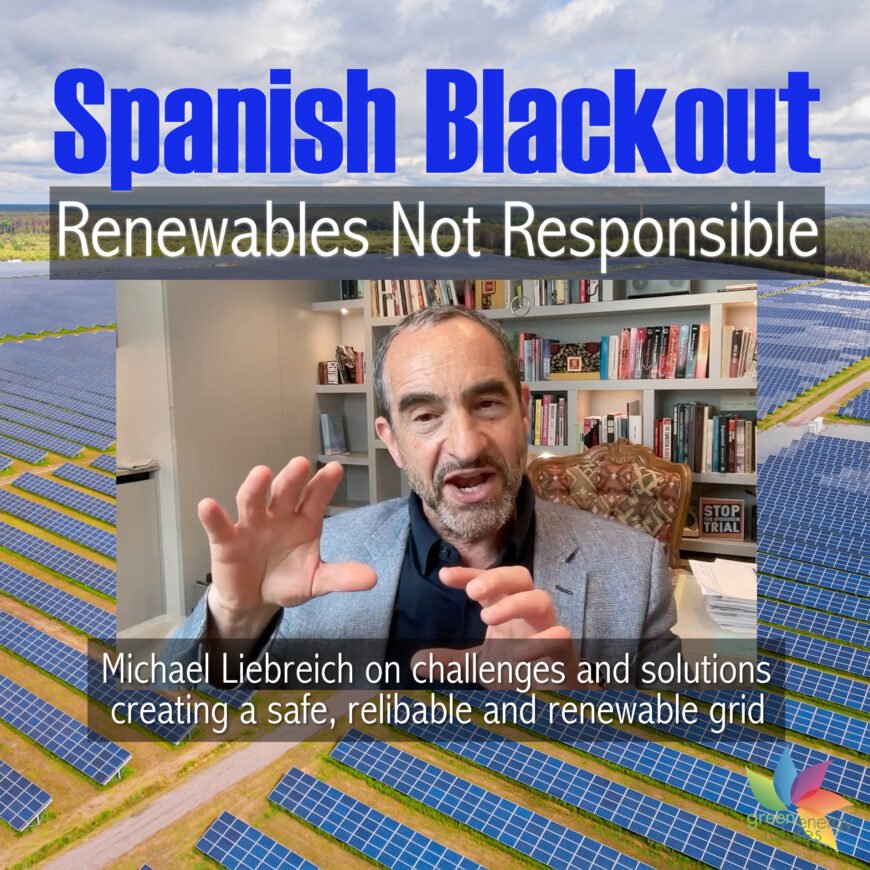Re-published and adapted from “Why the Lights Went Out in Spain – Experts Analyze ‘Sudden’ Loss of 15 Gigawatts of Power” first published by The Earth & I
By David Dodge, GreenEnergyFutures.ca
On April 28, 2025, a catastrophic electricity blackout left 50 million people in Spain without power when 15 gigawatts of power vanished from the grid in seconds.
The cascading outage affected businesses, transportation, and many other systems for 12 to 14 hours.
The pundits weighed in quickly blaming everything including renewable energy, atmospheric vibrations, frequency oscillations across Europe, a lack of grid inertia, failure of control systems and a plethora of other factors.
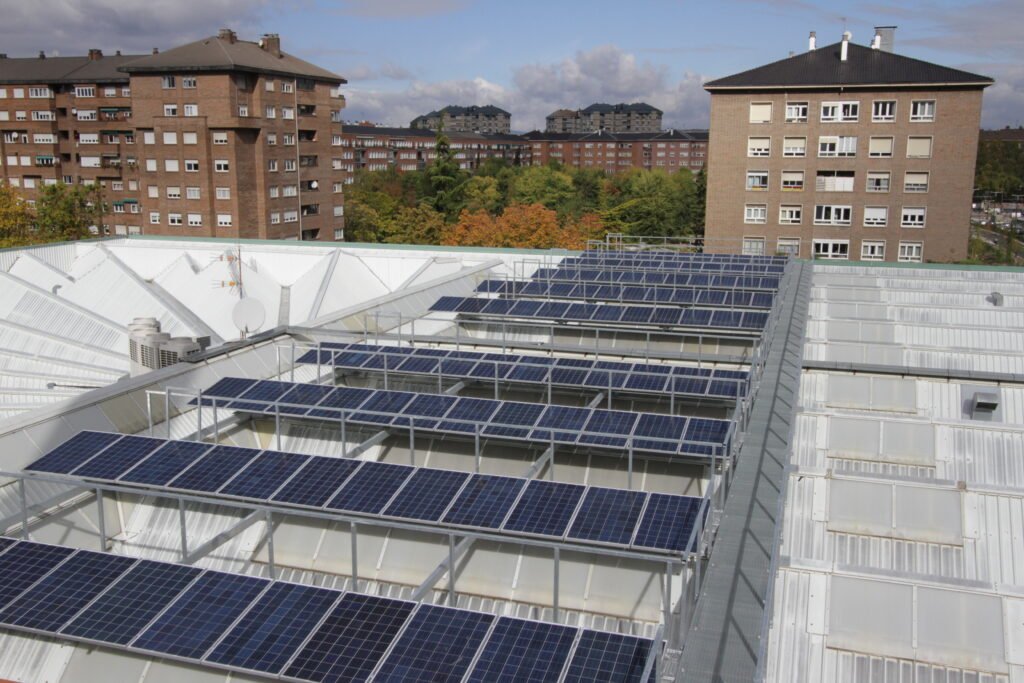
So Were Renewables to Blame?
“Great question,” says Michael Liebreich, an investor, advisor, and the founder of Bloomberg New Energy Finance, who we interviewed before the Spanish report was released.
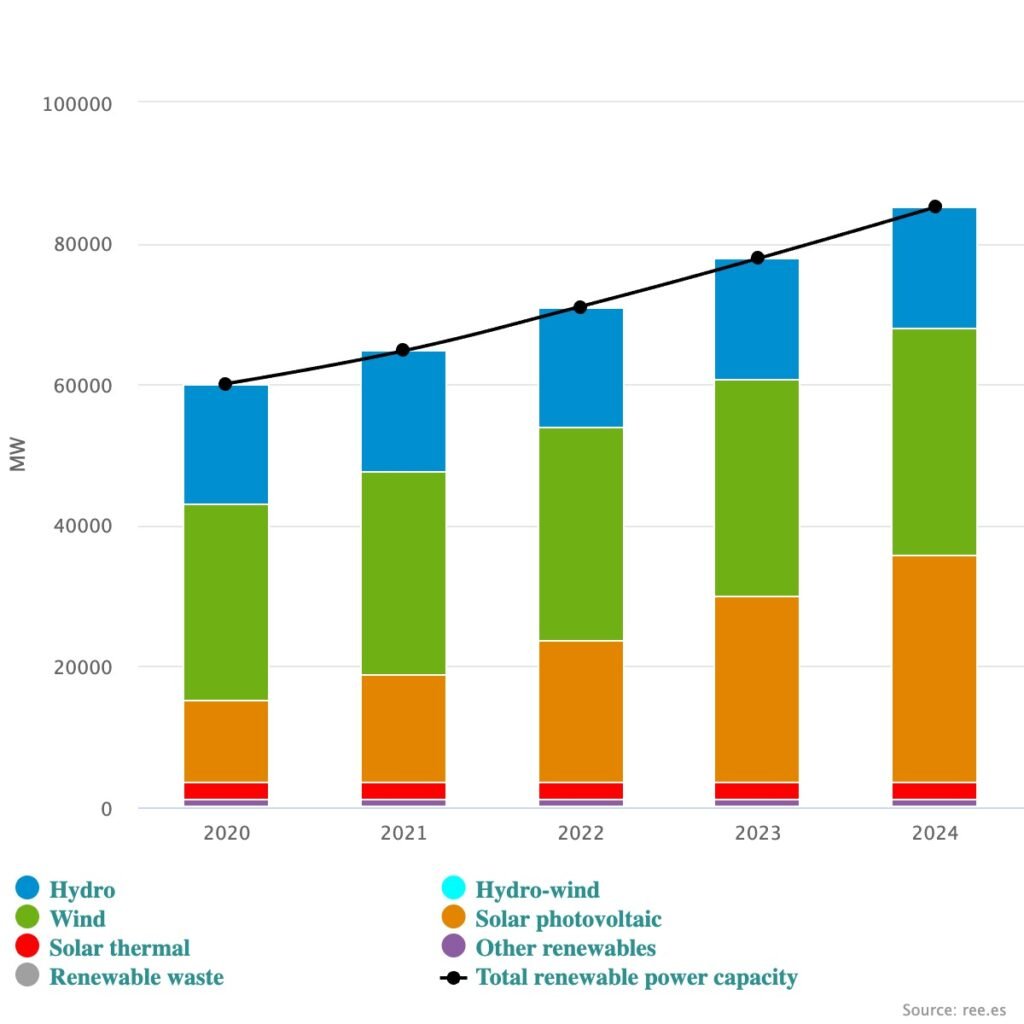
Twenty years ago, Spain had about 18% renewables in its energy mix. This has shot to 56% as of today.
And ironically just a few weeks before the blackout fans of renewable energy were celebrating that Spain had generated 100% of its electricity from renewables during the week.
In 20 years renewable energy has grown from 18% to 56% of total capacity. But on April 29, 2025 solar PV was providing 60%, wind 12% and solar thermal 5% for a total of 78% of the electricity demand at the time.

“And then, of course, two weeks later, you had the power cut. And the finger is pointed at renewables because wind and solar don’t provide what are called grid stability services,” says Liebreich.
In order to meet electricity demand, “You have to do some very specific things to manage the voltage, to manage the frequency, and deal with all sorts of harmonics and artifacts across this incredibly complex system,” says Liebreich.
To get the grid back on, you need “black start capability,” which is essentially power to run the stuff that generates the electricity. This can be provided by diesel generators or batteries, but wind and solar cannot provide this service. “And so everybody pointed the finger and said, there you go. That’s the culprit,” says Liebreich.
“The European grid is trying to do is to keep the same frequency across the whole thing, all the way from the Baltic Republics down to the edge of Portugal and, of course, down into the Balkans as well,” says Liebreich.
Indeed, managing the European grid is challenging. Interarea oscillations vary considerably from the Iberian Peninsula across Europe right down to the Balkans. (see chart below – Source IEEE Xplore)
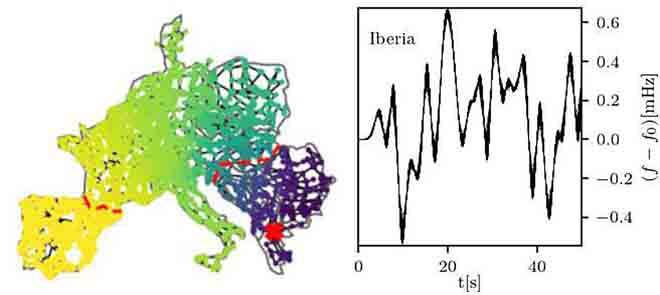
Frequency needs to be in tune
The North American grid operates at 60 hertz, while the European grid operates at 50 hertz, and “all of our equipment is designed to work at that frequency.”
It’s like speed control in your car, says Liebreich. You set cruise control to 60 miles an hour, and “if it fluctuates between 59 and 60, you won’t get a ticket.”
But if your cruise control is out of whack and varies between 55 and 65, you might get a ticket.
Inertia stops that from happening on the grid. “Generally, big spinning resources stop it from speeding up and slowing down, and the voltage wandering all over the place,” says Liebreich.
Grid services such as short-circuit current, black-start capability, help keep things from changing too fast. Services such as reactive power help control the ROCOF, or the rate of change of frequency.
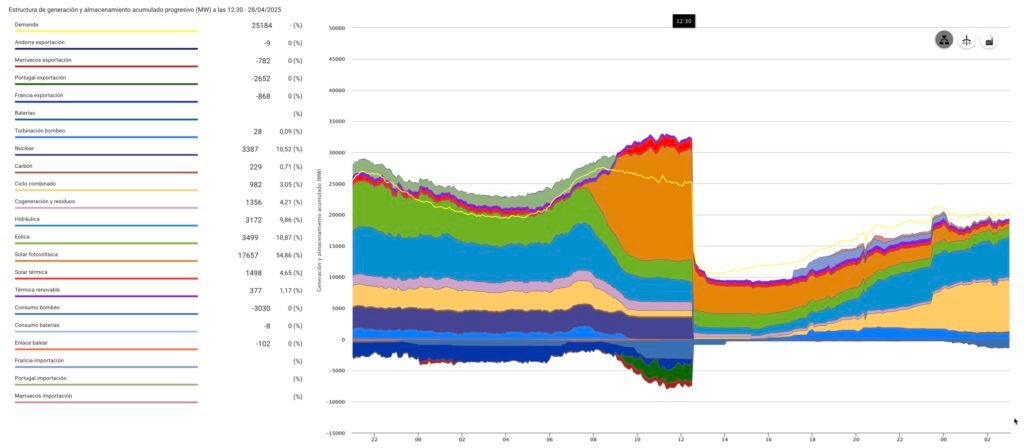
A bunch of strange things were happening leading up to the blackouts
Prior to the blackout here were weird artifacts and harmonics, and frequencies were bouncing around, says Liebreich.
Physicist Pilippe Jacquod noticed these oscillations against Latvia’s grid before the event.
Spain’s grid frequency started to oscillate against Latvia’s frequency at ~0.21Hz before the event. Could the culprit be inter-area oscillations? Says physicist, Philippe Jacquod in a Linkedin Post.
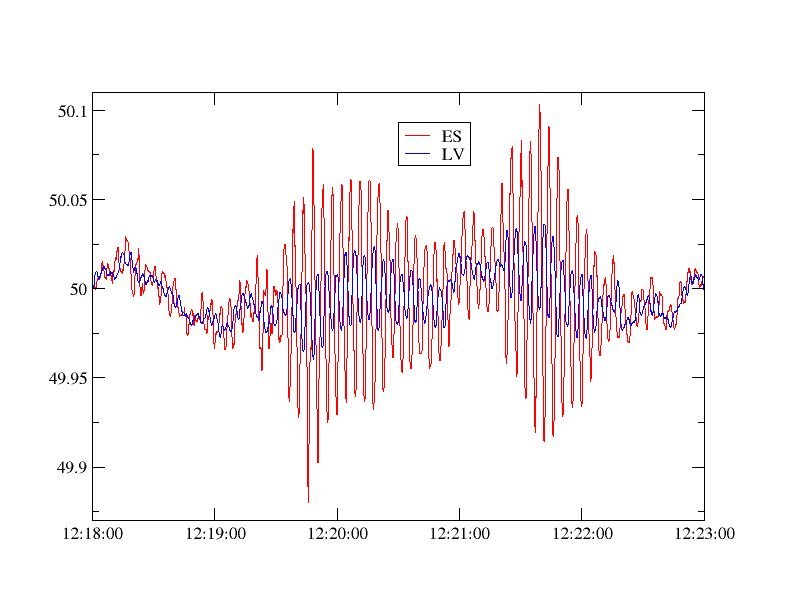
“An analogy would be your heart rhythms. You can have arrhythmias in your heart because electrical signals are bouncing around. And this is exactly the sort of stuff that happens on this system,” says Liebreich.
“Instead of being damped out by the control mechanisms, by the inertia, by the software, by the batteries, by whatever, those [factors] were bouncing around kind of amplified until it looks like some resources switched off,” says Liebreich.
When frequencies get out of whack, plants shut down.
So how could so many plants act the same way, resulting in the sudden loss of 15 gigawatts of electricity?
“We don’t know because the report’s not been written, but it looks very likely that those plants, to protect themselves from damage, were all set to switch off at the same frequency,” says Liebreich.
Liebreich says there are 10 to 12 buckets of things which can contribute to these challenges, which is why it’s very hard to guess at the cause of the Spanish blackout.
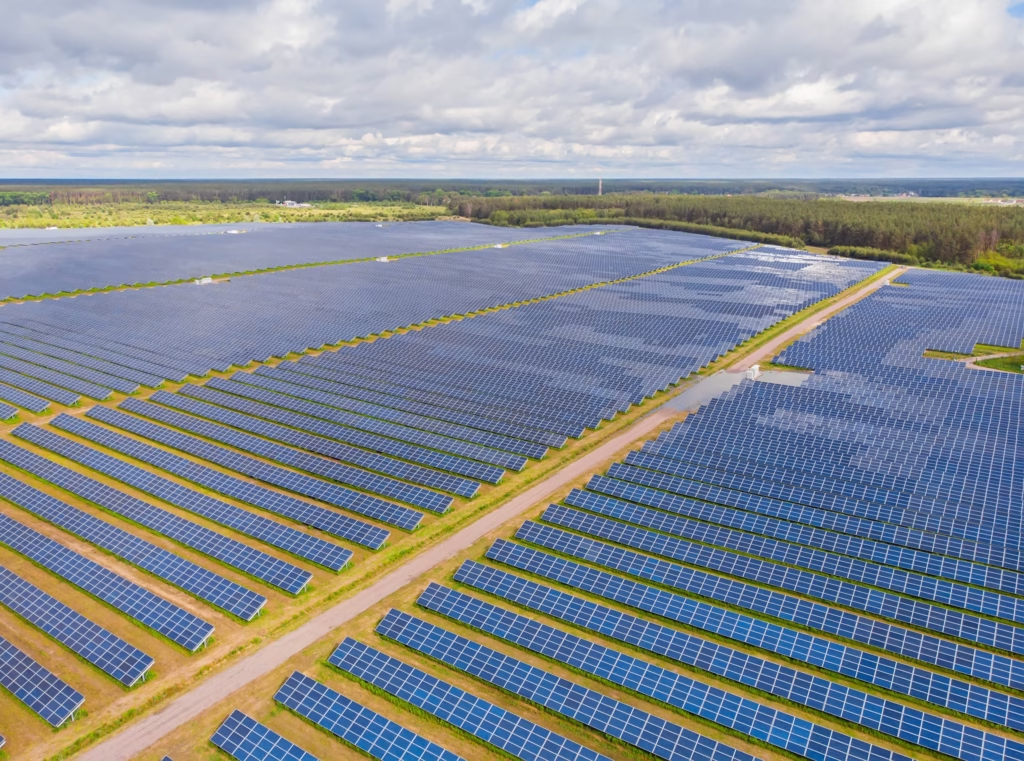
Grid inertia
Grid inertia refers to the grid’s resistance to changes in frequency due to sudden changes in power availability. Spinning resources such as generators provide inertia services, while because it takes time for friction to slow them down, just as when you take the foot off the gas in your car, it takes a while to slow down.
Hydro and gas and nuclear turbines are helpful this way. A wind turbine can provide some inertia too, but solar does not. When the sun goes behind a cloud, the power disappears.
But that’s probably not what happened in Spain.
Remember, 15 gigawatts of power production shut down in seconds with catastrophic consequences.
Spanish officials aren’t saying much about the causes, instead waiting for a detailed analysis of a very complex situation to be completed.
But Prime Minister Pedro Sanchez and power grid operator REE’s chief Beatriz Corredor have both said record levels of renewable energy were not to blame for Monday’s blackout.
“It’s not renewables, it wasn’t just a simple mismatch. It wasn’t just the sun went behind a cloud and now Spain had this huge power cut. That’s just definitely not what happened,” says Liebreich.
What can stabilize rapidly decentralizing grids?
Nearly all experts agree that batteries can help with the challenge of modernizing grids to manage thousands of decentralized energy resources.
“The nice thing about batteries is that they can provide a lot of those services, those stability services, those grid services,” says Liebreich.
But batteries won’t help what the Germans call the “Dunkelflaute” or doldrums or periods when the wind doesn’t blow and/ or the sun doesn’t shine for extended periods,
“Batteries will definitely help,” says Liebreich, but one robust solution may be one that neither renewable advocates nor fossil fuel advocates are touting.

Flexible gas
One answer may be to keep some gas, something Anders Lindberg, the head of Wärtsilä, a Finnish company, calls “flexible gas,” in its recently published Crossroads to Net Zero report.
Liebreich just had Lindberg on his podcast Cleaning Up.
Flexible gas plants are designed differently to provide fast start up times, low minimum operating levels and have high ramping ability, which means they can quickly increase or decrease output.
Standard gas plants run high, take hours to start up and are designed to provide socalled “baseload” power. This locks the grid into higher emissions, while the job of flexible gas plants is to provide necessary grid services and allow it to use as much cheap renewable energy as possible.
As it turns out Ander’s company makes Wärtsilä engines which are ideal for flexible gas plants.
Flexible vs. Standard Gas Plants
|
Attribute |
Flexible Gas Plant |
Standard Gas Plant (Combined Cycle) |
|
🕒 Start-up time |
5–10 minutes |
1–4 hours |
|
🔁 Ramp rate |
Very fast (10%+ per minute) |
Slow (1–5% per minute) |
|
💡 Use case |
Backup for renewables, peak demand |
Baseload or intermediate load |
|
🔌 Efficiency |
~40–45% (simple cycle); optimized for flexibility |
~55–62% (best efficiency at full load) |
|
🌿 Emissions |
Moderate; better when used rarely |
Higher if run continuously |
|
🧠 Smart controls |
Often includes real-time digital optimization |
Typically designed for steady-state |
|
⚙️ Technology |
Reciprocating engines, aeroderivative turbines |
Large gas + steam turbine (combined cycle) |
|
📉 Minimum load |
Can run at ~10–20% capacity |
Often needs to stay above ~50% to be efficient |
Consider Chile a country running on 75% renewable energy, but with 25% coal as well.
The idea is to ditch the coal and run the grid with 4% flexible gas which can “provide these stability services and keep everything humming along at 50 Hertz.”
This would produce 1/12th of the emissions of the coal and is much more affordable than shooting for the last few percentage points to achieve 100% renewable energy.
If we acknowledge that “Perfection is the enemy of the good,” “This is a good solution,” says Liebreich.
In some jurisdictions the 4% number might be 2%, or 7% or 10%, but by abandoning “absolutism” a very low carbon, decentralized grid is quite feasible.
Liebreich calls this a “blindingly obvious” solution, a way to “make a bunch of affordable progress right now.”
“We have ways of getting rid of that last two, four, five or 10%, right? Because you can go to clean molecules, you could go to biogas, or you could go to hydrogen,” over time says Liebreich.
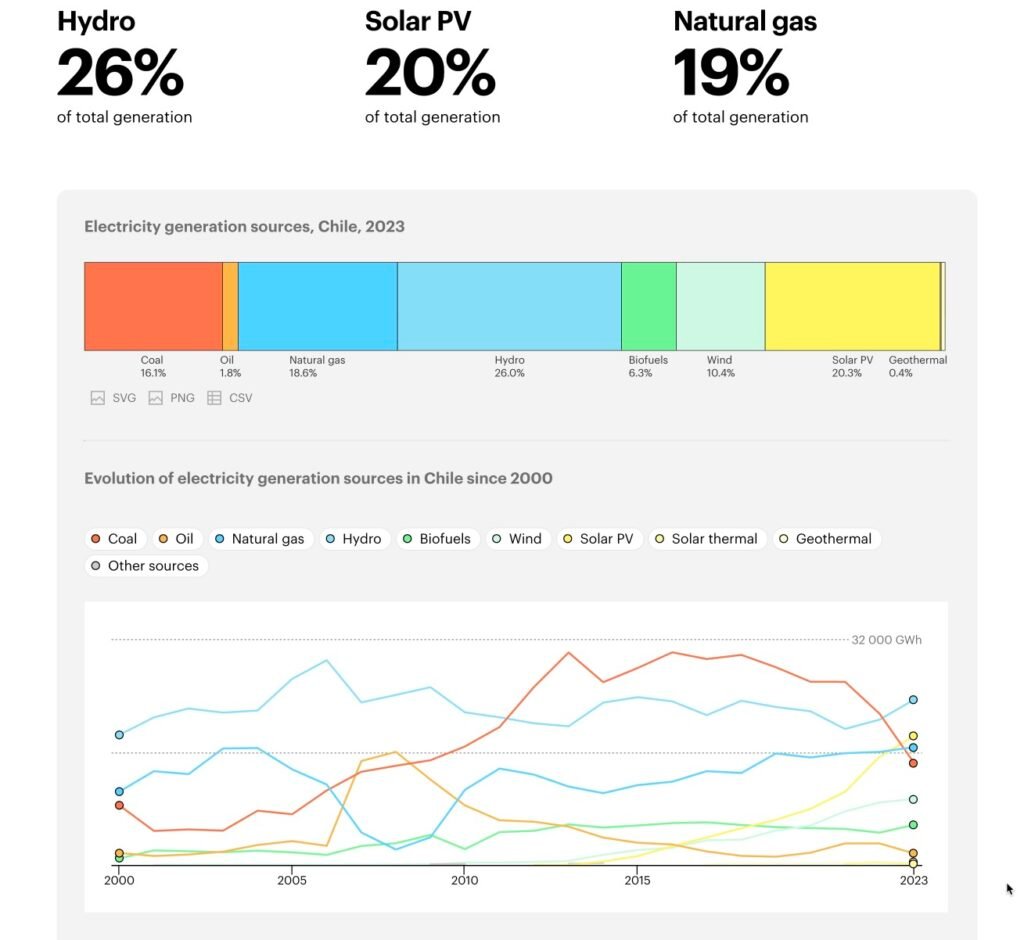
Not baseload gas
The key is not simply moving from coal to gas, it’s inflexible, says Liebreich.
Many in your audience might know that as baseload, which is a horrible term, a term I hate because it’s so confusing, “but inflexible plants going to flexible enables the introduction of just so much more clean, cheap renewables without driving the prices up.”
The world is investing trillions in electrifying transportation, heating and clean energy, but “investment in the grid has been flat.”
Grid modernization is essential
So what needs to be done to build an affordable, reliable, low carbon grid?
“Our leaders have been asleep at the wheel. The number one answer is ‘invest in the grid,’” says Liebrich.
The second thing is we’ve got to think about these grid stability services that we’ve been talking about,” says Liebreich.
“You’ve got to add in the reactive power, the short-circuit current, the black-start capability, because we used to get those services in a sense for free from the old technology – they’re not very expensive, but they’re not free in the new world.”
The third thing needed is digitization.
In the old days, grid operators found power failures when someone called them to report an outage. Digitization and AI can help monitor conditions of the grid down to tiny details and then plug that data into control systems that can react in very sophisticated ways to manage the grid.
“Digitize and then take the afternoon off,” says Liebreich.
Blaming renewables
Renewable energy delivers cheap power, and it brings new challenges. But there has been a long history of the conventional industry advocates blaming renewables every time the grid hiccups.
They were blamed in Texas when, as it turned out, the cold snap resulted in piles of frozen coal and the failure of a gas pumping station that wasn’t winterized.
Renewables were blamed for failures in Australia too, which had multiple factors at work. But instead of stepping back from renewables, South Australia has doubled down, successfully moving from 41% renewables (when they had problems) to 75% in 2023, and they are pursuing 100% renewable energy even after a catastrophic outage.
Since our interview with Michael Liebreich, the Spanish government has issued a report.
According to a report by Reuters: “The Spanish government said in a report on Tuesday that Spain’s grid operator Redeia miscalculated the correct mix of energy in the system. The government also blamed some conventional power plants, or thermal power plants using coal, gas and nuclear, for failing to help maintain an appropriate voltage level and as a result, the grid was unable to cope with a surge in voltage that triggered a cascade of power plant disconnections, ultimately leading to the outage.
The times they are a changing.
Electrification is underway and has trillions in investment behind it. The incumbents are certainly threatened by this revolution, but it is happening quickly. Global investment in clean energy is set to hit a record $3.3 trillion in 2025, says Reuters.
Liebreich says it’s critical to invest in modernizing grids to work efficiently in this new energy reality.
Green Energy Futures CKUA.com Podcast – Subscribe Today! More than 400 episodes!
Our full 40-minute interview with Michael Liebreich
